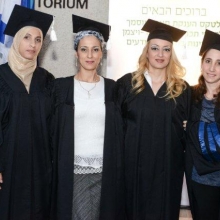The beauty and betrayal of crystals
Dr. Dvir Gur, Department of Molecular Genetics
New scientists

Dr. Dvir Gur is fascinated by crystals. But not the kind in your grandmother’s china cabinet — rather, the molecular crystals that many organisms construct in their cells. Fish, chameleons, and many insects use these crystals for specific functions such as vision, camouflage, communication, and thermal regulation.
The term ‘crystal’ describes a material whose molecules are arranged in a highly ordered structure, which, in turn, influences their physical properties. In humans, these same crystals can be an indication of illness, as they are the product of an overabundance of uric acid or an inability to sufficiently process and excrete it. In such cases, uric acid crystals build up in the blood, causing kidney and bladder stones, or in the case of gout, accumulate in the joints, leading to a form of arthritis characterized by a burning inflammation. These illnesses are examples of pathological crystal formation in which they form without any control mechanisms.

Dr. Dvir Gur studies crystal formations in the body, which can lead to disease.
Dr. Gur wants to discover the key agents controlling the specific formation processes in model organisms (organisms that have similar genetic and physiological characteristics to humans) in order to identify treatment targets for these common diseases in humans. In addition, since molecular crystals also have industrial uses, such as in optics components, as active ingredients in drugs, and as pearlescent pigments in cosmetics, understanding the way crystals form will also enable the production of crystals that are more ethical (without any need to harvest them from fish), economical, and better for the environment.
Dr. Gur became interested in molecular crystals after studying chemistry at Ben-Gurion University for his BSc. It was during his master’s degree at Weizmann that he became intrigued by the rich chemistry and crystallography inside organisms’ cells, which, he says, “is much more advanced, in many cases, than what humans can make in factories and laboratories.” He went on to complete his PhD at Weizmann, where he dove deeper into understanding how the structure and chemistry of the cells and the crystals within them translate into optical properties in different marine animals such as fish and planktonic crustaceans.
Dr. Gur did his first postdoctoral fellowship at Weizmann, combining physics and cell biology to elucidate how the crystals in the eyes of zebrafish can serve both visual and protective functions. His study of physics was critical to understanding optical properties of crystals such as light reflection. During a second postdoctoral fellowship at Howard Hughes Medical Institute’s Janelia Research Campus in Virginia, he used super-resolution optical microscopy, genetics, and molecular cell biology methodologies to study the pattern formation in zebrafish and medaka (a species of sea snail), and the biosynthesis and motility of their intracellular crystals.
At Weizmann, Dr. Gur continues to study the zebrafish in order to uncover the biological and chemical processes behind the crystal formation, going beyond function to understand how crystals are formed in the first place. He is using a combination of advanced cryo-electron microscopy and super-resolution fluorescence microscopy along with genetic manipulations and molecular cell biology to uncover the secrets behind biological molecular crystal formation.
”At Weizmann,” he says, “the infrastructure, centers, and tools all enable you to do the best science you can do.”
Biosketch
Born in Arad, Dr. Dvir Gur earned his BSc in chemistry with honors from Ben-Gurion University in 2009. He then received his MSc (2011) and PhD (2016) from the the Weizmann Institute’s Department of Structural Biology, under Prof. Lia Addadi and Prof. Steve Weiner. He carried out his first postdoctoral fellowship at the Institute, in the Department of Physics of Complex Systems and the Department of Molecular Cell Biology, and then moved to the Howard Hughes Medical Institute’s Janelia Research Campus in Virginia where he did a second fellowship.
Dr. Gur has received numerous awards for his research including the NIH Postdoctoral award for conducting independent research (2020), the NIH Fellows Award for Research Excellence (2019), and the Frontier Science Program Postdoctoral Fellowship and EMBO Postdoctoral Fellowship (2018), the Rothschild Foundation Postdoctoral Fellowship (2017), and the Weizmann Institute of Science prize for academic excellence and scientific accomplishments for a PhD (2016).
Dr. Gur is married to Eden and the couple has a son and a daughter, Yonatan and Omer.
—Jennifer Racz








